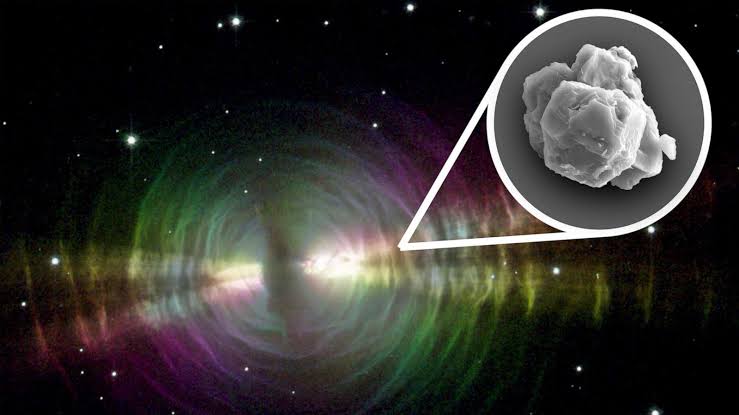
The Oldest “Thing” on Earth
Scientists managed to identify the oldest material on Earth: some stardust discovered inside a gigantic, rock-like meteorite that crashed into our planet half a century ago.
Researchers who analysed a meteorite that fell on Earth in the 1960s found 7.5-billion-year-old stellar grains inside these space rocks. The oldest of the dust particles were formed in the stars that began their life long before our Solar System was born. These particles turned out to be four million to three billion years older than our Sun (which itself is 4.6 billion years old).
This old interstellar dust composed of pre-solar grains (born before our sun) was scattered in the universe by the stars that died in the late stages of their lives. Some of this powder made a long journey towards our planet on a large asteroid, known as the Murchison meteorite, which weighed around 100 kilograms and ultimately fell down the skies of Australia on September 28, 1969.
To understand how old the particles inside the Murchison meteorite are, researchers measured the amount of time they were exposed to cosmic rays in space. These rays are high-energy particles that pass through our galaxy, penetrating solid matter. Some of these rays interact with the substance they encounter and create new elements. The longer the interaction, the more elements form. Scientists used a particular isotope of neon (Ne-21) to date the dust particles.
Measuring how many new elements are present shows scientists how long the particles were exposed to cosmic rays, which in turn, clues the age of these particles.
The grinding and analysis of space rock fragments also offered researchers an unusual by-product: a strong and pungent smell of “rotten peanut butter”. An earlier report on the study of another meteorite also mentioned a smell of “Brussels sprouts” (Aguas Zarcas; Costa Rica). Such aromas of rocky meteorites are not produced by living organisms, but by abiotic volatile organic compounds, when they are heated or melted.
The findings shed light on the debate over whether or not new stars form at a fixed rate, or whether the number of new stars increases and decreases over time. Thanks to these tiny grains, we now have direct evidence that there was an intense period of star formation in our galaxy seven billion years ago.
Researchers also learned that pre-solar dust travels through space in large clusters that are adhered together, rather than as individual “loners”.
REFERENCES
- 1. https://www.livescience.com/oldest-material-on-earth.html
- 2. https://www.bbc.com/news/science-environment-51099609
